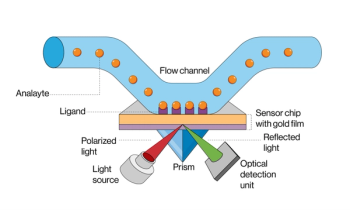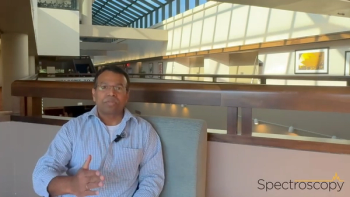
Exploring Data Transforms in Chemometrics
Our “Chemometrics in Spectroscopy” column highlights the methodology that is used in order to apply chemometric methods to data. Integrating chemometrics with spectroscopy allows scientists to understand solutions to their problems when they encounter surprising results. Recently, columnists Howard Mark and Jerome Workman, Jr., wrote a series of articles about data transforms in chemometric calibrations. In this listicle, we profile all pieces in this series and invite you to learn more about applying chemometric models to continuous spectral data.
Our “Chemometrics in Spectroscopy” column highlights the methodology that is used in order to apply chemometric methods to data. Integrating chemometrics with spectroscopy allows scientists to understand solutions to their problems when they encounter surprising results.
Recently, columnists Howard Mark and Jerome Workman, Jr., wrote a series of articles about data transforms in chemometric calibrations. In this listicle, we profile all pieces in this series and invite you to learn more about applying chemometric models to continuous spectral data. Happy reading!
In this “Chemometrics in Spectroscopy” column, Howard Mark and Jerome Workman, Jr. discuss how scientific instruments generate and store spectral data based on manufacturer-defined protocols, which may not align with every user’s preferences or analytical needs. Because manufacturers often design systems without direct user input, the resulting data format or presentation can be suboptimal (1). Additionally, users have diverse requirements, making it unlikely that one data format suits all. To address this, both instrument manufacturers and third-party developers offer software tools that convert raw data into more user-friendly formats (1). This article discusses the tools that aim to provide greater flexibility, enabling users to tailor data processing to better suit their specific applications and research goals (1).
The article "Data Transforms in Chemometric Calibrations: Simple Variations of MLR, Part 2" by Howard Mark and Jerome Workman Jr. explores how modifications to the multiple linear regression (MLR) algorithm can enhance calibration models in spectroscopy. Mark and Workman Jr. emphasize the importance of data transformations to address challenges like instrument variability and sample repacking effects, which can impact measurement consistency (2). The two critique the overuse of derivative transformations and advocate for alternative approaches, such as omitting the intercept term (b₀) in MLR models, especially when dealing with mixture data (2). They also discuss statistical methods, including ANOVA and t-tests, to assess the effectiveness of these transformations in reducing errors and improving model robustness (2).
The article "Data Transforms in Chemometric Calibrations: Variation in MLR, Part 3: Reducing Sensitivity to Repack Σbi = 0" by Howard Mark and Jerome Workman Jr. discusses a variation of the multiple linear regression (MLR) algorithm aimed at reducing sensitivity to repacked sample measurements in spectroscopic calibrations. The authors explore how modifying the MLR method can address variability introduced by sample repacking, enhancing the robustness of calibration models (3). This approach is particularly relevant in scenarios where sample presentation inconsistencies can impact analytical accuracy (3). By adjusting the MLR algorithm, the method seeks to improve the reliability of spectroscopic analyses across varying sample conditions.
The article "Data Transforms in Chemometric Calibrations, Part 4A: Continuous-Wavelength Spectra and Discrete-Wavelength Models" by Howard Mark and Jerome Workman Jr. examines the challenges of applying chemometric models, such as multiple linear regression (MLR), to continuous spectral data. It highlights that while spectroscopic instruments collect data across a continuous range of wavelengths, calibration models often use discrete wavelength points (4). This mismatch can lead to issues in model accuracy and robustness. The authors discuss strategies to reconcile continuous spectral data with discrete modeling approaches, aiming to improve the reliability of chemometric analyses in spectroscopy (4).
The article "Data Transforms in Chemometric Calibrations, Part 4B" by Howard Mark and Jerome Workman Jr. continues the discussion on aligning continuous-wavelength spectral data with discrete-wavelength chemometric models. The article emphasizes the importance of appropriate data transformations to bridge the gap between the continuous nature of spectral measurements and the discrete inputs required by models like multiple linear regression (MLR) (5). The authors explore techniques to enhance model robustness and accuracy, addressing challenges such as instrument variability and sample presentation inconsistencies (5). By refining data preprocessing methods, the article aims to improve the reliability of spectroscopic analyses across diverse applications (5).
References
- Mark, H.; Workman, Jr., J. Data Transforms in Chemometric Calibrations: Application to Discrete-Wavelength Models, Part 1: The Effect of Intercorrelation of the Spectral Data. Spectroscopy 2022, 37 (2), 16–18, 54. DOI:
10.56530/spectroscopy.wp6284b9 - Mark, H.; Workman, Jr., J. Data Transforms in Chemometric Calibrations: Simple Variations of MLR, Part 2. Spectroscopy 2022, 37 (7), 14–19. DOI:
10.56530/spectroscopy.cg7965x1 - Mark, H.; Workman, Jr., J. Data Transforms in Chemometric Calibrations: Variation in MLR, Part 3: Reducing Sensitivity to Repack Σbi = 0. Spectroscopy 2023, 38 (10), 14–18. DOI:
10.56530/spectroscopy.jm1087r1 - Mark, H.; Workman, Jr., J. Data Transforms in Chemometric Calibrations, Part 4A: Continuous-Wavelength Spectra and Discrete-Wavelength Models. Spectroscopy 2024, 39 (2), 12–17. DOI:
10.56530/spectroscopy.yr5374m6 - Mark, H.; Workman, Jr., J. Data Transforms in Chemometric Calibrations Part 4B: Continuation of the Discussion of Data Transforms for Continuous-Wavelength Spectra as well as Discrete-Wavelength Models. Spectroscopy 2024, 39 (7), 14–19. DOI:
10.56530/spectroscopy.hu8490r6
Newsletter
Get essential updates on the latest spectroscopy technologies, regulatory standards, and best practices—subscribe today to Spectroscopy.





